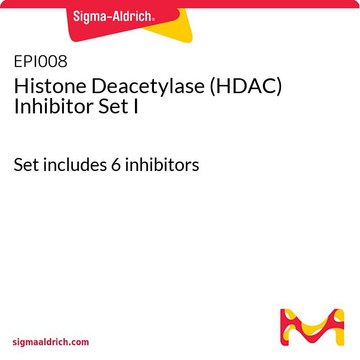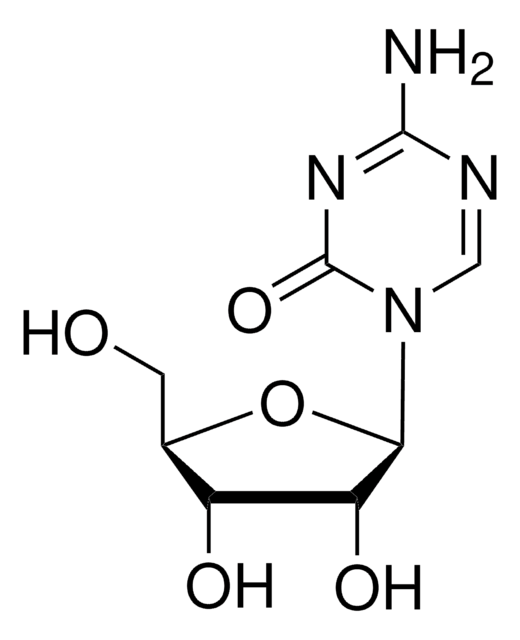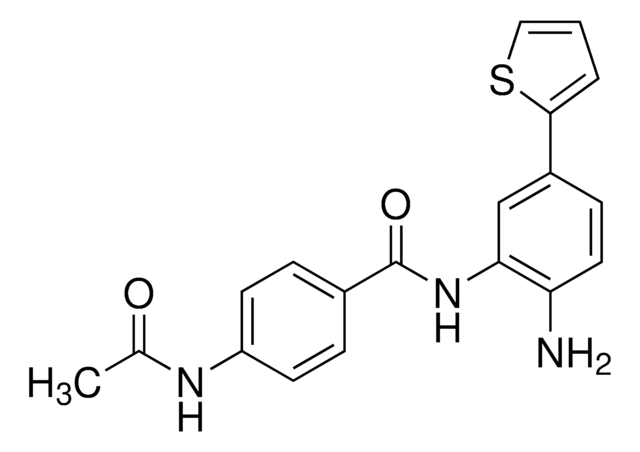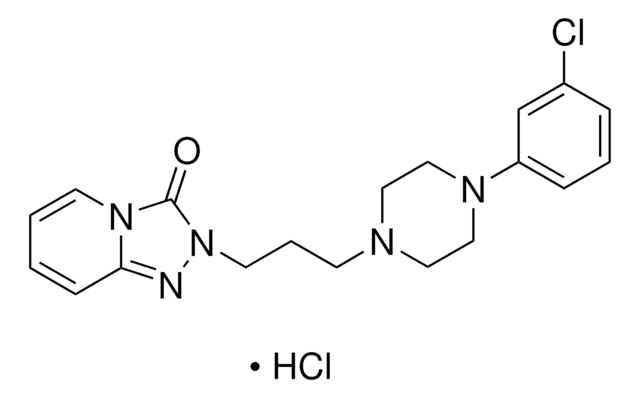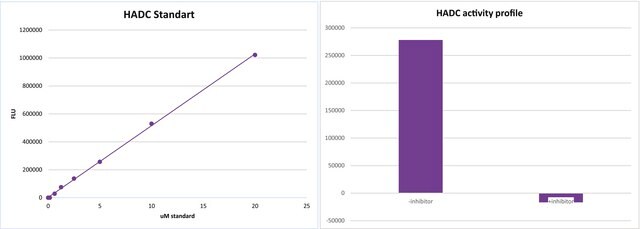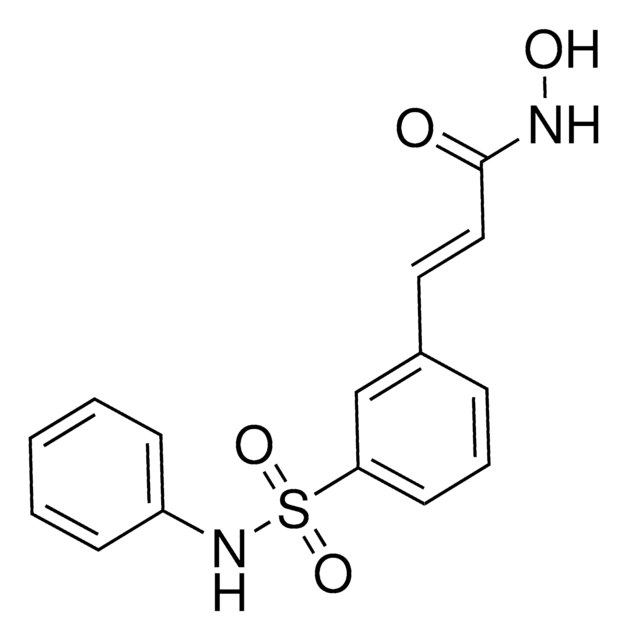C0621
CI−994
≥98% (HPLC), powder
Synonym(s):
4-Acetylamino-N-(2′-aminophenyl)benzamide, Acetyldinaline, Tacedinaline
About This Item
Recommended Products
Quality Level
Assay
≥98% (HPLC)
form
powder
color
off-white
solubility
DMSO: >10 mg/mL
storage temp.
room temp
SMILES string
CC(=O)Nc1ccc(cc1)C(=O)Nc2ccccc2N
InChI
1S/C15H15N3O2/c1-10(19)17-12-8-6-11(7-9-12)15(20)18-14-5-3-2-4-13(14)16/h2-9H,16H2,1H3,(H,17,19)(H,18,20)
InChI key
VAZAPHZUAVEOMC-UHFFFAOYSA-N
Gene Information
human ... HDAC1(3065) , HDAC10(83933) , HDAC11(79885) , HDAC2(3066) , HDAC3(8841) , HDAC4(9759) , HDAC5(10014) , HDAC6(10013) , HDAC7(51564) , HDAC8(55869) , HDAC9(9734)
Application
- as an histone deacetylase (HDAC) inhibitor to treat SUM229 and DT22 cells to study its effects
- as an HDAC inhibitor for screening in SPEL cells
- to study its effects on human myeloid and erythroid progenitors
Biochem/physiol Actions
Features and Benefits
related product
Signal Word
Warning
Hazard Statements
Precautionary Statements
Hazard Classifications
Eye Irrit. 2
Storage Class Code
11 - Combustible Solids
WGK
WGK 3
Flash Point(F)
Not applicable
Flash Point(C)
Not applicable
Personal Protective Equipment
Certificates of Analysis (COA)
Search for Certificates of Analysis (COA) by entering the products Lot/Batch Number. Lot and Batch Numbers can be found on a product’s label following the words ‘Lot’ or ‘Batch’.
Already Own This Product?
Find documentation for the products that you have recently purchased in the Document Library.
Customers Also Viewed
Related Content
We offer a variety of small molecule research tools, such as transcription factor modulators, inhibitors of chromatin modifying enzymes, and agonists/antagonists for target identification and validation in gene regulation research; a selection of these research tools is shown below.
Our team of scientists has experience in all areas of research including Life Science, Material Science, Chemical Synthesis, Chromatography, Analytical and many others.
Contact Technical Service
